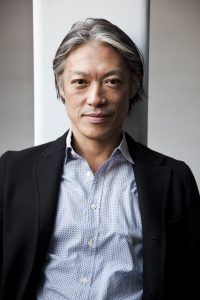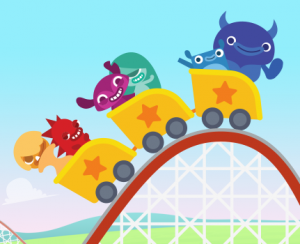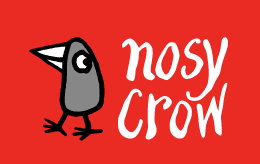This partial transcript of the App Fairy podcast has been edited for length and clarity. Visit appfairy.org for more information about Originator.
Carissa Christner: Hello and welcome to the App Fairy podcast. My name is Carissa Christner and today I’m very excited to bring to you an interview with Rex Ishibashi of the Originator apps.
Originator is most well known for the Endless apps, like Endless Alphabet and Endless Reader. They are great apps for teaching reading, vocabulary, and math skills. When people ask me, “What’s the one app that you can recommend to help my child learn to read?” Endless Apps are pretty much the first ones I recommend.

Rex Ishibashi: Thank you. It’s great being here.
CC: Let’s start off with some basics. Where are you guys located?
RI: We are located largely in the San Francisco Bay area. We’re a team of five. Four of us are based in the Bay Area and one of us is actually down in Los Angeles. By and large we work virtually from our homes.
CC: Have you been with Originator since it first started?
RI: I am one of the founders, yes. In fact, I consider our entire team of five to be founders. We were all together at a company prior that was doing some kids’ apps, and decided to venture out on our own to start Originator together.
CC: So you’ve got history with everybody, which makes it maybe a little easier to communicate with each other?
RI: It sure does, and it makes the virtual workspace that I described possible. There’s a lot of trust and natural chemistry between us, and a willingness to go outside of our comfort zones to do things we’ve never done. It makes the job fun. Sometimes challenging, but certainly fun.
CC: We’ve been talking [in past episodes] with app developers about how they make their artwork. Can you tell us a little bit about your process?
 RI: All the art and animations in the apps are digitally produced. The Endless series is done in 2D, with all of the artwork done in Illustrator or Flash. We’re also working on a new math app for older kids, ages 6 to 9. That will be our first 3D app and we’re developing all the artwork in Maya.
RI: All the art and animations in the apps are digitally produced. The Endless series is done in 2D, with all of the artwork done in Illustrator or Flash. We’re also working on a new math app for older kids, ages 6 to 9. That will be our first 3D app and we’re developing all the artwork in Maya.
…
CC: So on your small staff, do any of you have a history in education? I think you’ve got some really solid educational philosophy behind [your apps] and I’m curious if you have someone on staff or if you consult with someone?
RI: We don’t have professional educators [on staff], but we do have our own philosophies about education and what works—and certainly what works in a digital environment. Over the course of developing the seven Endless Apps, we’ve learned quite a bit through testing, feedback from our users, and feedback from educators who are using our apps in classrooms.
CC: That actually raises my next question: How do you do app testing?
RI: We test all of our apps with kids. Generally speaking, we run each app through two to four rounds of testing. Each test group is quite small, only three to five kids. What we’ve learned over time is that, yeah, it’s nice to have feedback from 25 kids, but it takes longer and is far more tiring. Most importantly, by the time you get through three to five kids, you have pretty clear headlines as far as what’s working—and what isn’t.
We have relationships with parent groups, a few preschools, and [elementary] schools in the Bay Area. They’re happy to have us come in for an hour or so to run testing with a few kids.
…
CC: Have you had any particular words that you’ve wanted to use, but think, “I don’t know how in the world we’re going to illustrate that with an animation”?
RI: We have, and I’m trying to think of examples… (CC: Enigma?) Funny you should say that—it’s on the list of words that has never made it to the app in Endless Alphabet, “rare words.” We think of them as words that kids love to say because they are complicated, oftentimes with a rhythm and cadence.
There was a morning when my then 3-year-old son woke up on a beautiful sunny day in San Francisco, and he walked up to the window and said, “It’s gorgeous outside!” Gorgeous is a word that my wife uses quite frequently to refer to weather when it’s beautiful. [Hearing a young] child use a [shorter] word like “pretty” can be a million dollar moment, so having them use a word like gorgeous or gargantuan or experiment is priceless.

CC: So at this point are you adding more words [to the Endless apps]?
 RI: We are no longer adding words. We’ve always taken the approach of launching an app with the quote unquote bare minimum, seeing how it was received seeing if the app worked and then expanding from there.
RI: We are no longer adding words. We’ve always taken the approach of launching an app with the quote unquote bare minimum, seeing how it was received seeing if the app worked and then expanding from there.
As it turns out, we’ve expanded all of our apps. Endless Alphabet launched with 26 words, now it has 100. Endless Reader, which is centered around the Dolch and Fry Sight Words, started with 26 words and it’s now up to 350. Endless Wordplay started off with 90 words in 30 lessons, and now has 270 words and 90 lessons. Endless Numbers started off with 25 numbers and now has 100. Endless Spanish started with 27 words (because of the additional letter in the Spanish language) and now it goes up to 100 words.
…
CC: Can you talk a little bit about your subscription model for Endless Learning Academy?
RI: Sure. You know the subscription model is something we always had in the back of our mind, even when we were developing Endless Alphabet. We’ve learned a lot in terms of pricing, how to present the subscription offer, etc. What we realized is that one size doesn’t fit all with respect to how families want to consume media, and what their budgets allow. The best analogy I can use is that some families want to rent a movie and have it streamed to them, and some families want to own it.
CC: That’s a good analogy. I’m thankful that you’re going to keep both options. I can see an argument for both sides, and I like being able to present them both when I talk to parents about the Endless Apps at the library!


